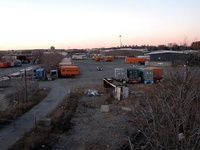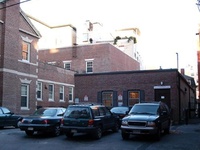A series of sleek, modern connected structures sweep around an elliptical courtyard, with a corridor of green aiming back across the river to Cambridge. The campus is airy, seeking to replicate Harvard Business School’s (HBS) success in converting fairly desolate landscape into viable academic space. This is the SPH of the future, at least as envisioned by Payette Associates.
The plan sites the campus just south of Western Ave. behind the riverfront Genzyme building as part of a “human life sciences” campus.
While the report cautions that “these early studies…do not propose specific programs to specific sites,” and Riccardi says the site is wholly speculative, the report identifies only the Western Ave. plot as the Allston location suited to host SPH.
“It is clear that for the School of Public Health to move to Allston, it must occupy a key location within a very large planned development,” the report concludes.
It is unclear, however, if the University’s central planners have come to this same conclusion.
Still early in the game, schools have been aggressive in staking out territory in Allston.
Before Summers determined that the Harvard Law School (HLS) would stay in Cambridge, a report by that school argued that if it was to move, HLS would be best suited by a riverfront plot on land currently occupied by the College’s athletic fields. Some College officials, in turn, have sought to assert their primacy over the fields.
Passions haven’t been as heated over the truckyard that currently sits where SPH would be situated. But what school wouldn’t want a “key” location?
Promise or Peril
The central promise of such a campus lies in its ability to accommodate the school’s extensive space needs.
Riccardi says that from a physical planning perspective, moving to Allston is a “no-brainer.”
“It makes all the sense in the world,” he says.
The Western Ave. location would also address the scattering of faculty that has plagued the school, an issue that many professors identify as a top priority.
“We need to be all together in one place…and there’s nowhere else in this area to do that,” Shore says.
Riccardi reports that even faculty in the rented Landmark Center Building, a mere mile away, “feel a sense of a loss of connection” from the central campus.
Read more in News
Black Female Alums Celebrate Third Decade














